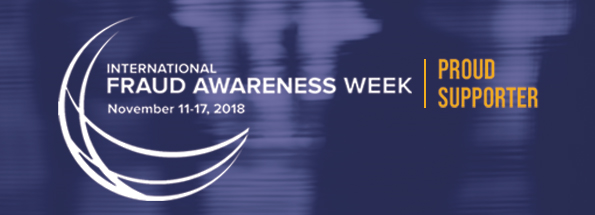Benchmarking Fraud: How Does Your Organization Compare?

The Association of Certified Fraud Examiners 2018 Report to the Nations on Occupational Fraud and Abuse offers a treasure trove of data you can use to assess how your organization’s fraud profile stacks up against other organizations in terms of industry, size, and location.
The Report is based on case data reported from Certified Fraud Examiners (CFEs) from all over the world. It lends itself to benchmarking your organization because it allows you to compare your own experiences against the medians reported from broadly similar organizations. Perhaps most important, you can learn about how other organizations responded to fraud.
Your risk of fraud.
Industry sector makes a big difference in the incidence and cost of fraud. Private, for-profit companies have the highest incidence and the highest median loss, where not for profits have much smaller losses and fewer frauds overall. In between are publicly traded companies and government agencies. An interesting comparison is between private vs. public for-profit businesses, with the private ones suffering higher losses. In general, private businesses face less scrutiny than public ones.
One counter-intuitive finding is that defrauded small organizations (less than 100 employees) suffered losses almost twice as high as large organizations (100 or more employees) in absolute terms. It’s not likely that the difference is attributable to the amount of money available—larger organizations offer fatter targets.
Among all types of fraud risk, corruption is one of only two types of fraud that is significantly more likely in large organizations (the other being non-cash fraud), perhaps because size offers more opportunities for small organized cliques to penetrate weak points, or due to a larger network of connections. Corruption is prevalent in almost every industry type, with the lone exception of professional services.
Your fraud prevention measures.
The presence of anti-fraud controls, such as surprise audits, proactive data monitoring/analysis, codes of conduct, etc. is shown by the ACFE Report to reduce the medial losses associated with fraud. It is perhaps predictable that small organizations in the study were far less likely to have a full range of anti-fraud controls in place. They tend to have only the basics, such as internal audits, management review, and external reviews of financial statements. Right on cue, 42% of frauds in small organizations were caused by lack of internal controls, compared with only 25% for larger organizations which tend to have a far more complete and robust set of controls in place.
One important anti-fraud control is the presence of a tip line. This was present in a little over 20% of small organizations, but fully 80% of large ones. The reason the disparity is important is that tips are the most common way a fraud is detected.
Fraud is a threat to all types and sizes of organizations, but two tendencies in the data stand out.
- First, large organizations deploy more controls, and ACFE finds that every type of control tends to depress fraud.
- Second, large organizations are more likely to experience fraud by corruption, which is an intentional organized attack at the weak points in an organizations’ links between units, internal or external.
The good news is that controls do work. Small organizations that may not have enough control due to cost or scale need to find ways to implement variations of these controls. The potential payoff from fraud averted or detected quickly is too large to not implement the controls.
What can the lessons and benchmarks embedded in the ACFE’s Report to the Nations on Occupational Fraud and Abuse teach you about your own organization’s risks? How can you become better protected?


